A gutter that is falling off can quickly escalate into a serious issue for Auckland homeowners, especially in a city where heavy rainfall and humid conditions are the norm. If not addressed promptly, a loose or sagging gutter can lead to water damage, foundation problems, and even damage to your home’s exterior, potentially costing thousands in repairs. Whether you’re in West Harbour, Mt Eden, or Papakura, fixing a falling gutter is essential to protect your property, maintain its value, and avoid costly water-related issues.
At My Homes Construct Ltd, we’ve been helping Aucklanders with gutter repairs for over 10 years, and we’ve seen firsthand how a quick fix can save homeowners from major headaches. In this comprehensive step-by-step guide, we’ll show you how to fix a gutter that is falling off, from identifying the cause to securing it back in place. We’ll also explore why Auckland homes are particularly prone to gutter damage, share case studies, provide preventative maintenance tips, and explain when it’s time to call in the professionals. Whether you’re a DIY enthusiast, a property manager, or a real estate professional looking to avoid expensive repairs, this guide will help you get your gutters back in shape and keep your home safe from water damage.
Understanding the root causes of a falling gutter is crucial for both fixing the issue and preventing it from happening again. Here are the most common reasons gutters fall off in Auckland homes, where the local climate and aging infrastructure play significant roles.
Gutters are typically secured to the fascia board with brackets or hangers. Over time, these brackets can loosen due to rust, corrosion, or the weight of water and debris. In Auckland’s high-wind zones (up to 44m/s under NZS 3604), strong gusts can also pull brackets loose, especially if they’re not properly secured. A client in Titirangi we worked with had a gutter fall off after a storm loosened several brackets—replacing them with rust-resistant stainless steel brackets solved the issue and ensured long-term stability.
The fascia board, which the gutter brackets are attached to, is often made of timber and can rot over time due to constant exposure to moisture. Auckland’s wet climate, with an annual rainfall of 1,200mm (per NIWA), accelerates this process, especially if the fascia isn’t properly sealed or maintained. When the fascia rots, the brackets lose their anchor point, causing the gutter to sag or fall off entirely. In Mt Roskill, we repaired a client’s gutter by replacing a rotted fascia board, providing a secure base for the brackets and preventing further damage.
If your gutters were installed incorrectly—such as with too few brackets, improper spacing (e.g., more than 600mm apart), or a lack of slope for drainage—they’re more likely to fall off over time. Poor installation is a common issue in older Auckland homes or DIY projects that didn’t follow industry best practices. A client in Papakura had a gutter fall off due to brackets spaced over 1m apart—we reinstalled them at 600mm intervals, per New Zealand building standards, to ensure the gutter stayed in place.
Auckland’s frequent heavy rainfall, with downpours of up to 150mm in a single day during winter storms, can overload gutters, especially if they’re clogged with debris like leaves, twigs, or moss. This added weight strains the brackets and can pull the gutter away from the fascia. In treed areas like Albany or the Waitakere Ranges, debris buildup is a common culprit. A client in Albany had their gutter sag after a storm due to debris buildup—we cleared the gutter, reinforced the brackets, and installed a gutter guard to prevent future issues.
Auckland’s temperature fluctuations, while not extreme, can cause gutters to expand and contract, particularly in aluminum or steel systems. Over time, this movement can loosen brackets or pull the gutter away from the fascia, especially if the system wasn’t installed with expansion joints. In Remuera, we fixed a client’s sagging gutter by adding expansion joints and securing the brackets, ensuring the system could handle thermal movement without falling off.
Before you start fixing your gutter, gather the right tools and materials to ensure a safe, effective, and long-lasting repair. Here’s what you’ll need for an Auckland home, tailored for the city’s wet, windy, and coastal conditions.
Pro Tip: In coastal areas like West Harbour or Mission Bay, opt for stainless steel brackets and screws over galvanized ones to prevent corrosion from salt air, which can cause brackets to fail within 2-3 years. Stainless steel brackets cost $2-$3 each at Mitre 10, a small investment for long-term durability.
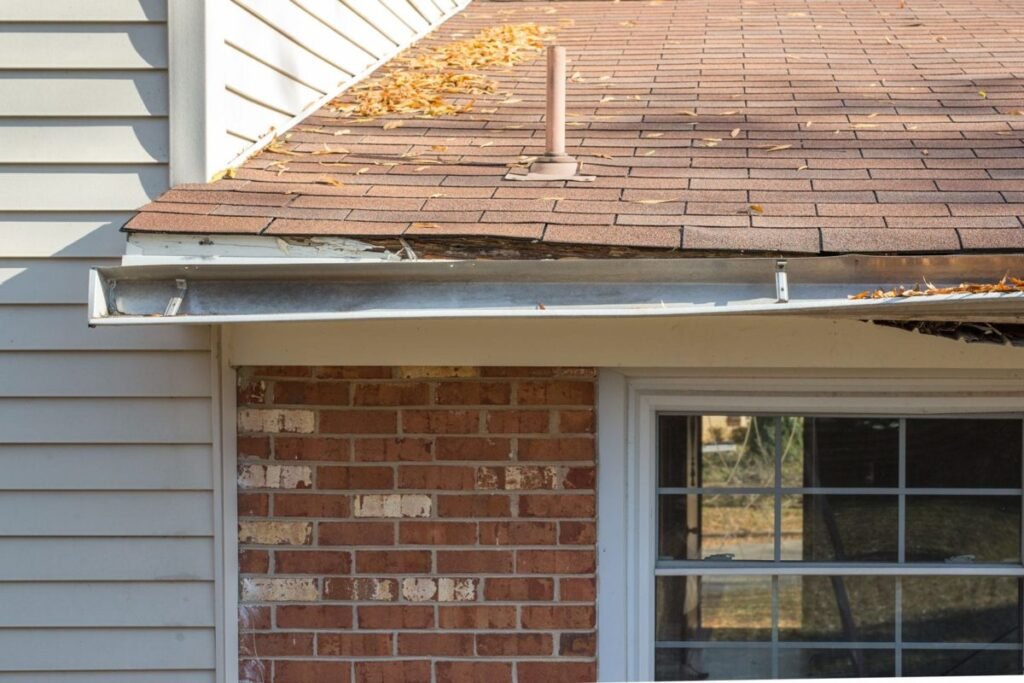
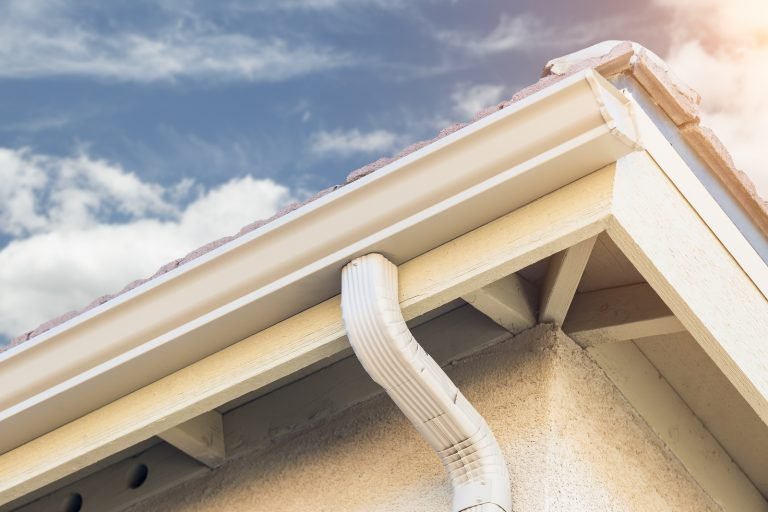
Fixing a gutter that is falling off is a manageable DIY task if you follow these steps. This guide is tailored for Auckland homeowners, ensuring your repair withstands the city’s challenging weather conditions.
Start by assessing the extent of the problem to plan your repair:
Reattach or replace the brackets to secure the gutter back in place:
Inspect and repair the fascia board if it’s contributing to the problem:
Check the gutter’s alignment to ensure proper drainage:
Seal joints and seams to prevent leaks that could worsen the issue:
Safety Note: Always use a stable ladder and have someone spot you while working at height. In Auckland’s high-wind zones, avoid working on windy days to reduce the risk of ladder accidents—wind speeds can reach 44m/s, making ladders unstable. Wear gloves and safety glasses to protect yourself from sharp edges, rust, and debris.
Auckland’s unique climate and environmental factors make gutters particularly vulnerable to damage, increasing the likelihood of them falling off. Here’s a deeper look at these challenges and how to address them.
Auckland’s annual rainfall of 1,200mm, with heavy downpours of up to 150mm in a single day during winter storms, puts significant stress on gutters. This can overload brackets, especially if the gutter is clogged, causing it to sag or fall off. Regular cleaning and reinforcing brackets with stainless steel options can help. In Titirangi, we reinforced a client’s gutter brackets after a storm, ensuring it could handle the next heavy rain without falling off.
Auckland is classified as a high-wind zone under NZS 3604, with wind speeds up to 44m/s, and some areas like the Waitakere Ranges or Orakei can experience stronger gusts. High winds can loosen brackets, pull gutters away from the fascia, or cause debris to accumulate, leading to blockages and overflow. After a windy storm, inspect your gutters for signs of movement or damage, and tighten any loose brackets. A client in Orakei we worked with had their gutter fall off after a windy spring season—we re-secured the brackets and added extra ones for stability, ensuring it could withstand future gusts.
In coastal Auckland suburbs like West Harbour, Mission Bay, or Takapuna, salt from sea air settles on gutters and brackets, forming white, crusty deposits that accelerate corrosion, especially on aluminum or steel systems. Over time, this can weaken brackets and cause them to fail, leading to a falling gutter. Using stainless steel brackets and treating metal gutters with a rust-resistant coating can mitigate this issue. For a project in West Harbour (near our office at 84B West Harbour Drive), we repaired a client’s gutter by replacing corroded brackets with stainless steel ones and applying a rust-resistant coating, ensuring durability in the salty coastal environment.
Auckland’s humid climate (70-80% humidity year-round, per NIWA) encourages moss, algae, and debris buildup in gutters, especially in shaded areas like Albany or the Waitakere Ranges. This buildup adds weight, strains brackets, and can lead to overflow, pulling the gutter away from the fascia. Cleaning gutters twice a year—once in spring and once in autumn—can prevent this. A client in Albany we worked with avoided gutter damage by scheduling regular cleanings, keeping their system free of moss and debris that could cause it to fall off.
Many Auckland homes, particularly in older suburbs like Mt Roskill, Grey Lynn, or Ponsonby, have aging exteriors with wooden fascia boards that are prone to rot. As the fascia deteriorates, it weakens the gutter’s anchor points, causing it to fall off. Replacing rotted fascia with H3.2-treated timber and using rust-resistant brackets can extend the life of your gutter system. In Mt Roskill, we replaced a client’s rotted fascia and reattached their gutter, preventing further damage to their 1950s home and ensuring the gutter stayed secure.
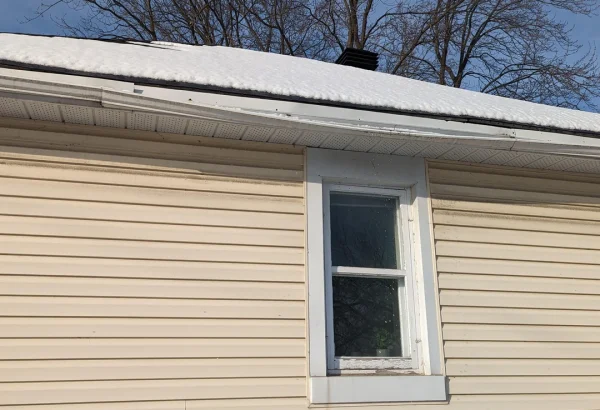
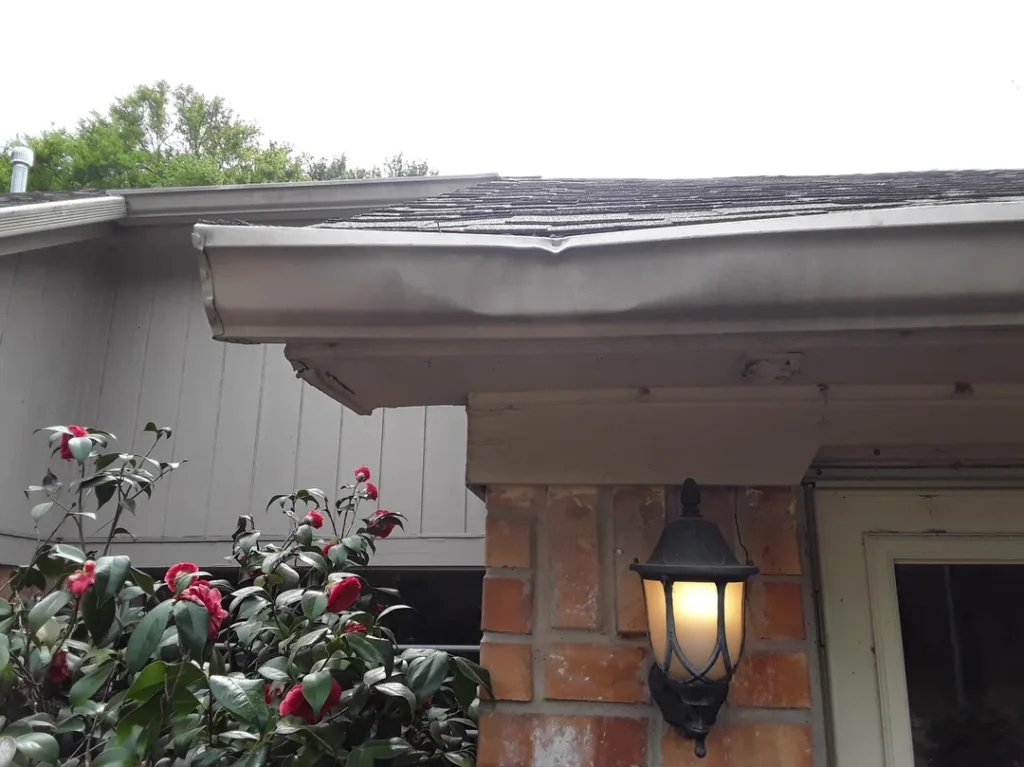
Fixing a gutter that is falling off is important, but preventing the issue in the first place can save you time, money, and stress. Here are some preventative maintenance strategies tailored for Auckland homes.
Gutter guards are mesh or perforated covers that fit over your gutters, preventing leaves, twigs, and other debris from clogging the system. This reduces the risk of overflow and added weight that can strain brackets, especially in treed areas like Titirangi or Albany. Gutter guards cost $5-$10 per meter at Bunnings and can be installed in a few hours. For a client in Albany, we installed gutter guards after repairing their falling gutter, significantly reducing debris buildup and preventing future strain on the brackets.
Clean your gutters at least twice a year—once in spring and once in autumn—to remove debris and prevent blockages that lead to overflow. In Auckland, where storms can bring down leaves and twigs, you may need to clean more often after major weather events. Use a ladder, gloves, and a bucket to clear debris, and check downpipes for blockages. In Papakura, we helped a client establish a regular cleaning schedule, which kept their gutters free of debris and prevented their gutter from falling off during the rainy season.
Inspect your gutter brackets annually for signs of rust, looseness, or damage, especially after storms or high winds. Tighten any loose screws, and replace rusted brackets with stainless steel ones to ensure durability. A client in Mt Eden we worked with avoided a falling gutter by replacing their rusted brackets during an annual inspection, keeping their system secure despite frequent heavy rain.
Ensure your downpipes direct water away from your home’s foundation, ideally into a stormwater drain or a gravel-filled drainage area. If downpipes are too short or poorly positioned, water can back up and overflow, adding weight to the gutter and straining brackets. In St Heliers, we extended a client’s downpipe to a drainage area after fixing their falling gutter, ensuring water flowed away from the house and reducing stress on the system.
While fixing a loose gutter is often a DIY-friendly task, some situations require professional expertise. Here’s when to contact the experts at My Homes Construct Ltd.
If your gutter is severely damaged—such as large cracks, extensive rust, or multiple detached sections—it may need replacement rather than repair. Replacing a gutter system in Auckland typically costs $2,000-$5,000, depending on the size of your home and the material (e.g., aluminum, PVC, or Colorsteel). In West Harbour, we replaced a client’s rusted gutter system after failed DIY repairs, ensuring their home was protected from water damage with a new, durable system.
If your gutter continues to sag or overflow even after repairs, there may be underlying issues, such as poor slope, blocked downpipes, or structural problems with your roofline. A professional can diagnose and fix these issues to ensure proper drainage and prevent the gutter from falling off again. In Mt Eden, we helped a client resolve persistent overflow by adjusting their gutter slope, clearing a blocked downpipe, and reinforcing the brackets, preventing further damage to their fascia.
If your gutter is on a multi-story home or in a hard-to-reach area, working at height can be dangerous, especially in Auckland’s windy conditions. Professionals have the right equipment, such as scaffolding, harnesses, and cherry pickers, to safely handle high-level repairs. A client in Epsom hired us to fix their second-story gutter after realizing the risk of ladder work on their sloped site—we completed the repair safely in under 3 hours using scaffolding.
To show how these steps and tips come together, here are two real-world examples of gutter repair projects we’ve completed at My Homes Construct Ltd.
A homeowner in West Harbour, near our office at 84B West Harbour Drive, contacted us about their aluminum gutter, which had fallen off due to corroded brackets caused by coastal salt exposure. The sagging gutter was causing water to pool near their foundation, risking structural damage. We replaced the corroded brackets with stainless steel ones, treated the gutter with a rust-resistant coating, and adjusted the slope to ensure proper drainage. We also extended the downpipe to direct water away from the foundation. The repair cost $250, including materials and labor, and the client’s gutter has remained secure for 2 years, even through Auckland’s wet winters.
A family in Titirangi had their gutter fall off after a winter storm brought 120mm of rain in a single day, loosening brackets and causing overflow from debris buildup. The falling gutter led to water damage on their fascia and pooling near their foundation. We cleared the debris, replaced the loose brackets with stainless steel ones, and installed a gutter guard to prevent future blockages. We also adjusted the slope to ensure proper drainage and sealed the joints to prevent leaks. The project cost $300, and the client was relieved to have their gutter secure and their home protected from further water damage.
With over 10 years of experience in gutter repairs, My Homes Construct Ltd has some expert tips to ensure your gutter repair is a success in Auckland’s challenging conditions.
Not all brackets are suitable for Auckland’s climate. In coastal areas like West Harbour or Mission Bay, use stainless steel brackets to prevent corrosion from salt air—galvanized brackets may rust within 2-3 years. In inland areas like Mt Roskill, galvanized brackets are sufficient but should be checked annually for rust. Stainless steel brackets cost $2-$3 each, while galvanized ones are $1-$2, a small price difference for added durability.
Auckland’s high-wind zones make ladder work risky on gusty days. Check the weather forecast and avoid working when wind speeds exceed 20m/s (check MetService for updates). A client in Papakura we worked with avoided a ladder accident by scheduling their repair on a calm day, ensuring a safe and successful fix.
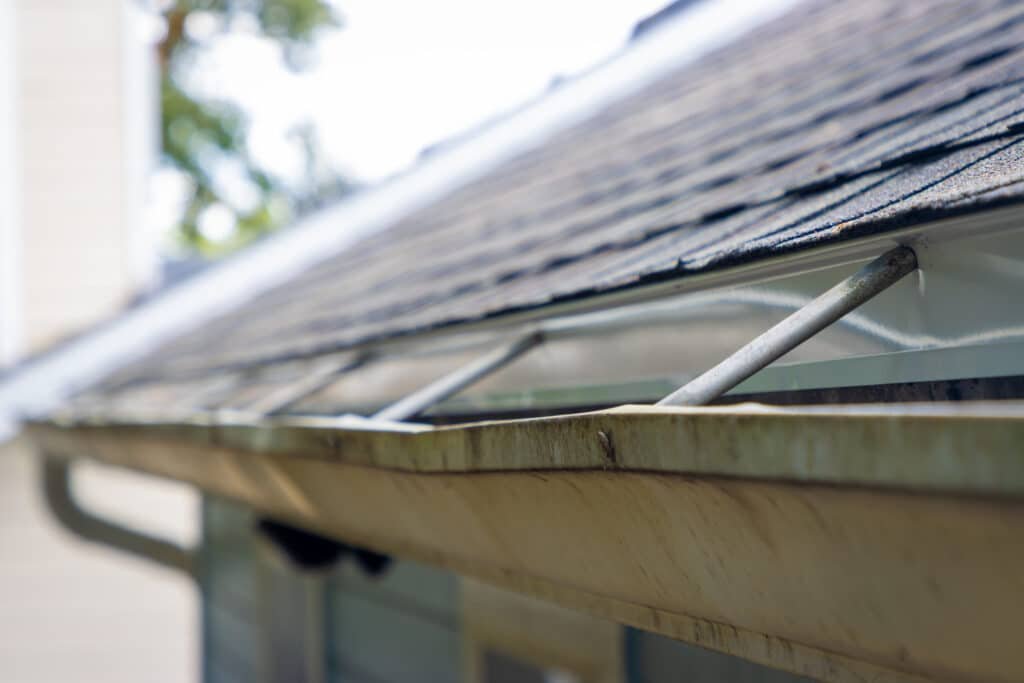
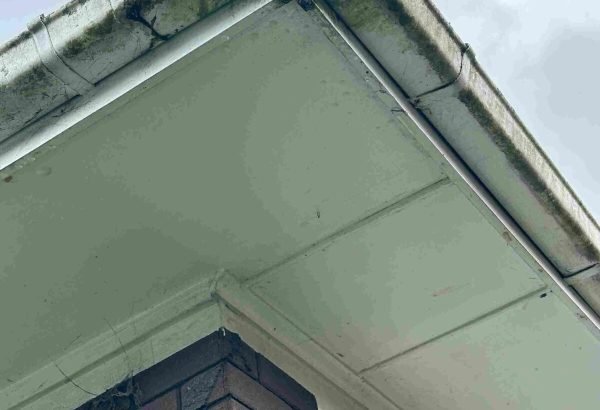
Here are answers to more frequently asked questions, formatted for voice search and NLP optimization.
Inspect the gutter for loose brackets, rotted fascia, or debris buildup. Secure or replace brackets, repair the fascia if needed, ensure proper slope with a level, and seal any leaks with waterproof sealant. Follow our step-by-step guide for detailed instructions tailored for Auckland’s climate.
A DIY repair costs $50-$100 for materials (brackets, sealant, screws). Professional repairs in Auckland typically cost $150-$300 for minor fixes, or $2,000-$5,000 for a full replacement. My Homes Construct Ltd offers competitive rates—call us for a free quote!
Yes, but it’s riskier due to the height. Use a stable ladder, have a buddy spot you, and wear safety gear. For high-level gutters, it’s safer to hire a professional with the right equipment. My Homes Construct Ltd specializes in high-level repairs across Auckland.
Clean your gutters twice a year to remove debris, inspect and reinforce brackets annually, install gutter guards to prevent blockages, and ensure downpipes direct water away from your foundation. Regular maintenance can prevent your gutter from falling off again.
In coastal areas, use stainless steel brackets to prevent corrosion from salt air—they cost $2-$3 each but last longer. In inland areas, galvanized brackets ($1-$2 each) are sufficient but should be checked for rust annually. My Homes Construct Ltd uses stainless steel for all coastal repairs.
At My Homes Construct Ltd, we’re proud to be Auckland’s trusted gutter specialists, with over 10 years of experience helping homeowners and property managers keep their homes safe from water damage. Here’s why we’re the go-to choice for gutter repairs in the region.
Our team has over a decade of experience in gutter repairs, from fixing loose gutters to full replacements. We’ve worked on homes across Auckland, from West Harbour to Papakura, and understand the unique challenges of the local climate and housing stock.
We offer fast, reliable service at competitive prices, with most gutter repairs completed in under 3 hours. Our rates start at $150 for minor fixes, making professional repairs accessible for Auckland homeowners. A client in St Heliers praised our quick response after their gutter fell off during a storm—we had it fixed the same day for $200.
Based at 84B West Harbour Drive, West Harbour, Auckland 0618, we’re a local business that’s proud to serve our community. We’ve built a reputation for quality workmanship and excellent customer service, with dozens of 5-star reviews from Auckland homeowners. Whether you need a quick fix or a full gutter replacement, we’re here to help.
A gutter that is falling off doesn’t have to lead to costly water damage or structural issues. By following this step-by-step guide, Auckland homeowners can fix loose gutters, ensure proper drainage, and protect their homes from the city’s heavy rainfall and humid climate. With preventative maintenance and regular inspections, you can avoid future issues and keep your gutter system in top shape for years to come. Whether you’re a DIY enthusiast or prefer professional help, addressing gutter issues promptly can save you thousands in repairs and maintain your property’s value.
Don’t wait until your gutter causes costly water damage.
📞 Call My Homes Construct Ltd today at +64 22 315 8987 or visit us at 84B West Harbour Drive, West Harbour, Auckland 0618 for expert gutter repair and maintenance services in Auckland.
Let’s keep your home safe and dry—contact us today!
WhatsApp us